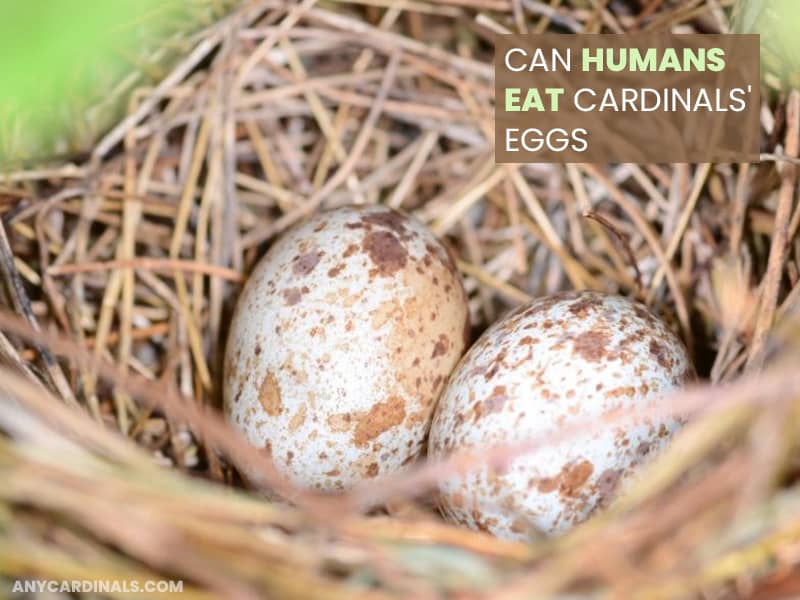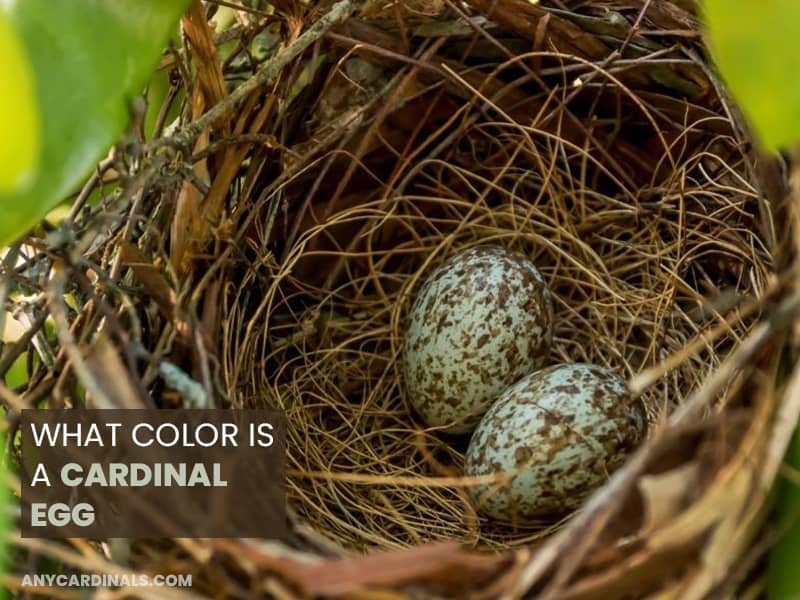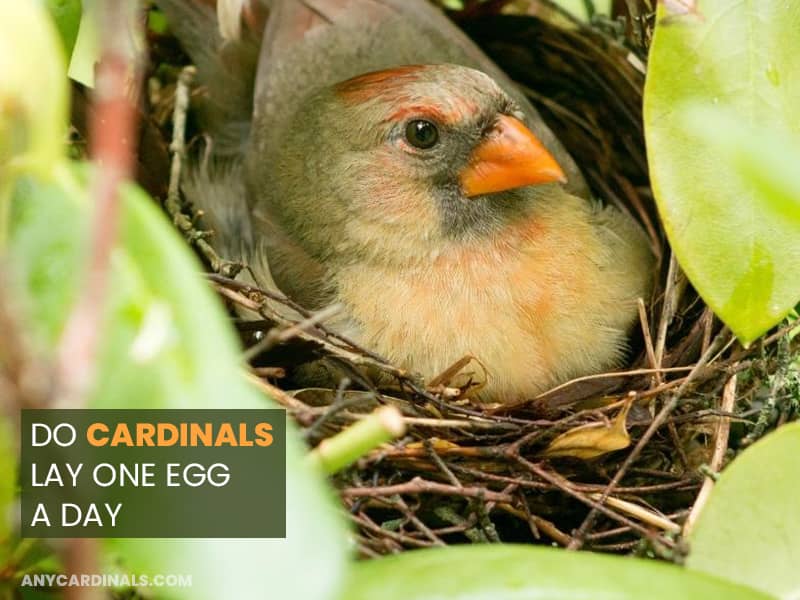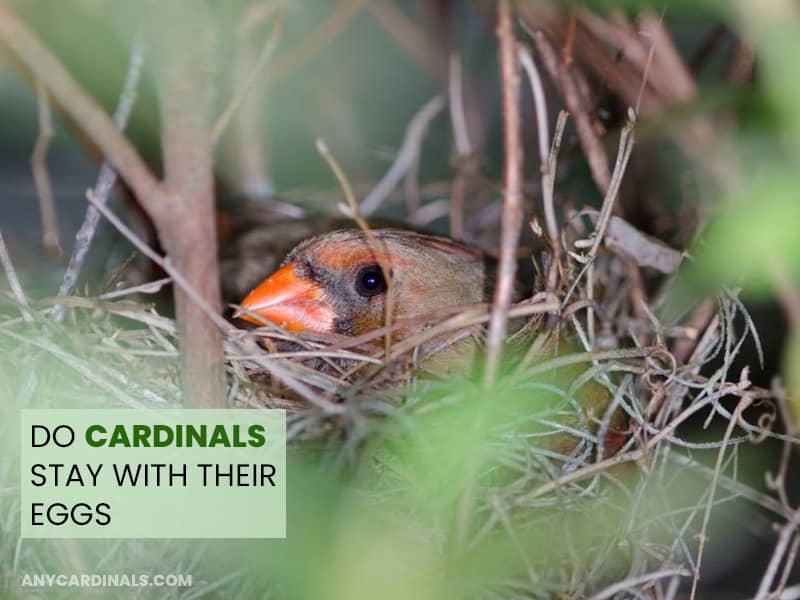Do Cardinals Eat Other Birds Eggs in Nesting Diet?
Among charming bird species, cardinals stand out with their diverse diet. They eat nearly everything, but do cardinals eat other birds’ eggs? What’s your guess?
No, cardinals don’t eat other birds’ eggs. As seed eaters, they rely on seeds as their primary food, turning to bugs, fruits, and rarely carrion during shortages.
This blog post explores cardinals’ diet and egg-related facts. Let’s dive in!

Read more about cardinals food:
Why Don’t Cardinals Eat Other Birds’ Eggs?
Cardinals avoid other birds’ eggs due to their omnivorous diet, which favors seeds, fruits, and insects. Eggs lack the nutrients they seek, like protein from bugs or energy from seeds.
Unlike predatory birds, cardinals lack the instinct to raid nests, focusing instead on foraging for accessible foods.
Their beak shape is suited for cracking seeds, not piercing eggshells, per Cornell Lab.
Everything You Need To Know About Cardinal Eggs and Their Diet
Below, we have answered some questions about cardinals‘ food habits and eggs. So, without delaying more, let’s get straight into it.
What Do Cardinals Like To Eat Most If Not, It’s A Bird’s Eggs?
As you know, cardinals don’t consume birds’ eggs; instead, they primarily feed on black oil sunflower and safflower seeds. They also eat white milo, various fruits, bugs, and insects.

FYI, cardinals enjoy gobbling cracked corn, crushed peanuts, and berries other than those foods mentioned above.
What Animals Eat Cardinals’ Eggs?
Many animals target cardinals’ eggs, including birds of prey like hawks and owls, and smaller birds such as blue jays and shrikes.

Snakes, like rat snakes, often raid nests when parents are away, posing a significant threat to eggs.
Raccoons and squirrels also steal eggs if nests are poorly hidden.
Can Humans Eat Cardinals’ Eggs?
Technically, cardinal eggs are edible, like other bird eggs, but eating them is unethical and often illegal under wildlife protection laws.

Instead of consuming them, help protect found eggs by leaving them undisturbed or contacting local wildlife experts.
Disturbing nests can harm cardinal populations and violate regulations, per National Wildlife Federation.
What Color Is A Cardinal Egg?
Cardinal eggs are typically light gray or green with brown or gray speckles. Some may appear ivory with similar markings, varying slightly by individual.

These colors help camouflage eggs in nests, protecting them from predators.
Speckle patterns blend with dappled sunlight in shrubby nests.
Do Cardinals Lay One Egg A Day?
No, female cardinals lay three to four eggs per clutch, not one daily. They incubate these eggs for 11-13 days until hatching.

Males cardinals feed females during incubation, ensuring they stay nourished while protecting the nest.
Clutch size may vary based on food availability and season.
What Month Do Cardinals Lay Eggs?
Cardinals lay eggs from March to September, raising two broods annually. The first brood starts in March, the second from May to July.
Each clutch contains 3-4 eggs, with females laying eggs in well-hidden nests.
Warm climates may extend their breeding season into late summer.
Where Do Cardinals Lay Eggs?
Cardinals build nests in dense shrubs, bushes, or low trees, preferring protected areas with thick vegetation for safety.
They construct cup-shaped nests using twigs, grass, and bark, often hidden in evergreens or thorny shrubs.
Nests are typically 3-10 feet above ground to deter predators.
Do Cardinals Stay With Their Eggs?
Yes, cardinals stay with their eggs until they hatch and fledge, about 9-11 days after hatching. Parents care for juveniles until they’re independent.

After fledging, parents may start a new brood, leaving older chicks to fend for themselves.
Males often guard the nest while females incubate eggs.
How Do Cardinals Protect Their Own Eggs?
Cardinals protect eggs by building nests in dense, thorny vegetation, camouflaging them from predators. Females incubate eggs, while males stand guard.
They use alarm calls and aggressive displays to deter threats like snakes or jays, sometimes dive-bombing intruders.
Their vibrant plumage distracts predators from nests, drawing attention away.
How Can You Support Cardinals’ Nesting?
To aid cardinals’ nesting, plant native shrubs like dogwood or holly, providing safe nesting sites and berries for food.
Avoid pruning dense vegetation during breeding season and keep cats indoors to reduce predation. Offer feeders with sunflower seeds to supplement their diet.
Install nest boxes designed for cardinals to encourage safe breeding, per National Wildlife Federation.
Final Words
Cardinals don’t eat other birds’ eggs, sticking to seeds, fruits, insects, and rarely carrion. Their gentle nature sets them apart from nest-raiding predators.
We hope this article clears up myths about cardinals’ diet. Share it on Facebook and Pinterest for fellow birders. Happy birding!

